The smallest iPod with a screen debuted September 7, 2005, lasting through seven generations until it was discontinued in 2017. A look back at the life of the iPod that changed the most.
Throughout the history of Apple, the company's design aesthetic for continuing products has often entailed small tweaks over time, punctuated by the occasional huge changes. But the iPad nano was unique, in that its design changed, sometimes radically, with nearly every new edition.
The iPod nano had a lot of different shapes over the course of its life. It was rectangular, then more square-ish, then rectangular again, and then a perfect square, until finally going rectangular again. It was often the cheaper alternative to another iPod product, but it added new functionalities throughout its run.
No matter what it looked like, the nano was almost always touted for its compact size. And for a long stretch of its existence, it was the highest-selling iPod, and therefore the highest-selling music player in the world.
Previously, the best-selling model was the iPod mini which had debuted in 2004 and been updated in 2005. This iPod mini had the kind of incredible success that would guarantee any other company would milk it forever. Not Apple.
On September 7, 2005, Apple held a Special Music Event. Steve Jobs touted the success of the iPod and iTunes up to that time, along with a new Harry Potter-themed collectable iPod and the arrival of Madonna's entire catalog on iTunes. Then he also announced the ill-fated "iTunes phone," the Motorola ROKR.
After touting the 22 million iPods had been sold up to that point, and talking about the many iPod accessories available, Jobs announced that the iPod Mini was finished. This enormous cash-making device would be completely and immediately replaced by a brand new product. The iPod nano.
"The iPod nano is the biggest revolution since the original iPod," Jobs said, and introduced it by pulling the product out of the small mini-pocket in his jeans.
The original nano, available in black and white, was very tall and thin. It was also considerably smaller than the iPod mini. It was 1.6 inches wide, 3.5 inches long and 0.27 inches thick, weighing only 1.5 ounces. Featuring a click wheel and small color screen, the nano could hold up to 1,000 songs, as many as the much larger original iPod from 2001. The nano shipped in 2GB and 4GB sizes, priced at $199 and $249, respectively.
"My prediction is this is going to instantly become the highest-volume, most popular iPod in the world, and therefore the most popular portable music player in the world," Jobs said of the nano.
Jobs' prediction came true, as Apple announced that Apple sold 14 million iPods in the holiday quarter in 2005, a number driven largely by nano sales.
People bought them in their millions and they used their iPod nano devices for years. In 2008, long after this first version had itself been discontinued, people were using it — and discovering a problem. Apple introduced was a replacement program for first-generation iPod nanos, due to a battery overheating issue in a small number of products.
Second generation
That model of the nano had been off the market for two years because it was replaced on September 25, 2006 with a totally redesigned version.
At the introduction, part of the "Showtime" event, Jobs indeed described the nano as "the most popular mp3 player in the world." He went on to introduce the second generation of the product, which he described as "designed all new from the ground up." The new nano was made out of aluminum, and was touted as thinner than the original, plus its battery life was increased to 24 hours, rather than 14 the previous year.
The introduction of aluminum also meant the opportunity for different colors, so the second nano was available in silver, pink, green, blue and black.
The 2GB edition retailed for $149, with 4GB models going for $199 and an 8GB model (up to 2,000 songs) at $249.
Third generation
The third iPod nano was announced a year after that, at what was known as the "Beat Goes On" music event on September 5, 2007. It was the same keynote that saw the unveiling of the iPod touch, as Apple began adapting iPods for the post-iPhone world.
Jobs yet again described the nano as "the most popular music player in history." But once more, there were changes to announce.
The new nano added video for the first time, along with the album cover flow feature, gaming, and a design that got rid of plastic in favor of metal on the top and bottom. That nano came with three games bundled; in those pre-App Store times, other games could be bought from iTunes.
Most notably, the third-generation iPod nano changed the shape. Where earlier models had been tall and thin, this one was shorter and wider, with a two-inch screen. It was offered in 4GB ($149) and 8GB ($199) models, while available colors included silver, black, blue, green and a (PRODUCT)RED special edition. It also added a much higher-resolution display.
This release also occasioned a particularly memorable Apple commercial, the one featuring Feist's song "1, 2, 3, 4."
Fourth generation
The next nano arrived at the "Let's Rock" event on September 9, 2008, along with the second-generation iPod Touch. It was the keynote when Steve Jobs appeared under a slide showing the Mark Twain quote "reports of my death are greatly exaggerated," in reference to rumors at the time about his health.
That introduction once again showed a nano with a new shape, once again tall and lean. This time featuring a curved aluminum and glass enclosure, the fourth nano once again improved the screen, and was available in an 8GB model for $149 and a 16GB model for $199.
This time, there were nine colors: silver, purple, blue, green, orange, yellow, pink, (PRODUCT)RED and black.
"With the latest 4G iPod nano, Apple has delivered a more versatile, ultra thin form factor that should appeal to a broader audience than last year's square 3G nano," AppleInsider wrote in our 4.5-star (out of 5) review. "It has also polished and enhanced the software, with smart accelerometer integration, a slick Cover Flow view, greater accessibility, a handy Genius function, and audio recording features that the company has seemed too hesitant to add to the iPod line until now."
Fifth generation
The fifth iPod nano arrived in 2009, once again in September, as Jobs announced on stage that Apple had sold over 100 million iPod nanos.
For the new generation, the headline feature was a video camera. Curiously, this new iPod nano had the camera but the iPod touch that was introduced the same day did not. The first iPhone with a video camera, the 3GS, had been introduced earlier that year.
The look of the fifth nano wasn't a huge departure from the fourth, but it was thinner, and elongated the screen so that it took up more space on the device. Also added was an FM radio.
Jobs positioned the new video-camera-equipped nano as competition for the then-popular Flip Video line of low-cost video cameras. Flip's parent company, Pure Digital, had been sold to Cisco Systems in March 2009 for $590 million, but the advent of video cameras in smartphones all but killed that product, which was discontinued two years later.
AppleInsider gave that nano 4.5 stars out of 5.
"The new 5G iPod nano shows Apple isn't content with selling last year's products, and is constantly working to deliver desirable new features in the same sized package at the same price," we wrote. "Anyone in the market for a slim, easy to use MP3 player should be extremely satisfied, particularly with its fun new camera and other hardware upgrades."
The fifth-generation nano was offered in an 8GB model for $149 and a 16GB model for $179, and it came in nine colors: Silver, black, purple, blue, green, orange, yellow, (PRODUCT)RED and pink.
The sixth generation
The next nano, arriving at an event September 1, 2010, was the line's most radical design departure to date. It was also when the nano lost its crown as the best-selling music player. For Jobs announced here that the iPod touch had overtaken the nano.
"What can we do to make the iPod nano better?" Jobs asked rhetorically at the keynote. "We'd like to make it smaller, and we'd like to make it better." This entailed getting rid of the click wheel, making it a touchscreen device for the first time, and changing the shape, to a perfect square.
"This is the biggest reinvention of the iPod nano since its debut in 2005, and we think users are going to love it," said Jobs said in a press release. "Replacing the click wheel with our Multi-Touch interface has enabled us to shrink the iPod nano into an amazingly small design that is instantly wearable with its built-in clip."
The new nano was available at $149 for the 8GB model and $179 for the 16GB model.
The 2010 nano line was the last new one for two years, although Apple did release a 1.2 update at its iPhone event in October 2011. Some third-party accessory makers offered watchbands, in order to allow the sixth-generation iPod nano to be worn as a watch, prior to the arrival of the actual Apple Watch.
The seventh generation
During the two years between iPod nano releases, the iPod began to seriously recede in importance, as most of its functions were subsumed by the rapidly growing iPhone category, and the relatively new iPad cannibalizing sales as well. And even within the iPod category, more than half of devices sold were in the iPod Touch line, as of late 2011.
Apple would give the nano one last hurrah in the fall of 2012, the one and only iPod introduction of the Tim Cook era. And this, once again, changed the look and shape of the device, making it the most iPhone-like of any nano.
"When we looked to create a new iPod nano, we really wanted to take the opportunity to reinvent the nano," Greg Joswiak said on stage. The result was an abandonment of the square, and a return to a more rectangular device, one with a bigger, 2.5-inch screen.
Also for the first time in 2012, Apple relegated the new iPod nano and touch to a single press release. The nano was offered in a 16GB edition for $149, available in pink, yellow, blue, green, purple, silver and slate.
"If size and portability are important, the diminutive new nano might be your favorite iPod. It's compact and sturdy, super easy to use, and weighs so little that it's hard to feel it in your pocket. It's the size and heft of a small pack of gum, and it's about as easy to figure out how to use it," AppleInsider wrote in a review of the 7th-generation nano. "For $149, Apple could have included a bit more fun. It is, however, a better overall value and feature mix than previous iPod nanos offered, and will no doubt be popular this holiday season."
Death of the nano
The 2012 nano was the last new one to be introduced, but Apple didn't actually kill the product for nearly five more years.
Apple pulled both the nano and iPod Shuffle from its website in July of 2017, officially confirming later that month that they were no longer part of the lineup.
"Today, we are simplifying our iPod lineup with two models of iPod touch now with double the capacity starting at just $199," Apple said in a statement July 27. "And, we are discontinuing the iPod shuffle and iPod nano."
The nano legacy
The nano was a hugely successful product that had a very long life: its seven generations took place over 12 years.
Perhaps what was most significant about it, though, was how it demonstrated Apple's capacity for bold design creativity. And for never standing still, for never taking gigantic sales as reason not to radically revise and update.
Keep up with AppleInsider by downloading the AppleInsider app for iOS, and follow us on YouTube, Twitter @appleinsider and Facebook for live, late-breaking coverage. You can also check out our official Instagram account for exclusive photos.
 Stephen Silver
Stephen Silver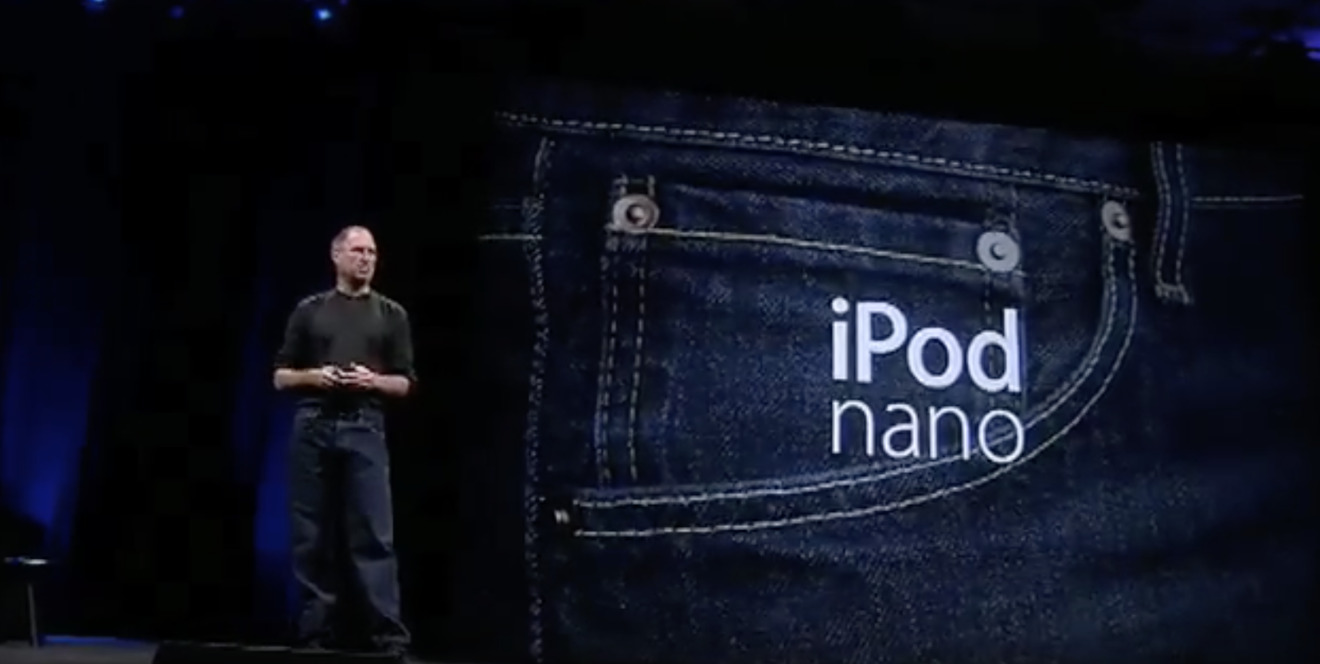
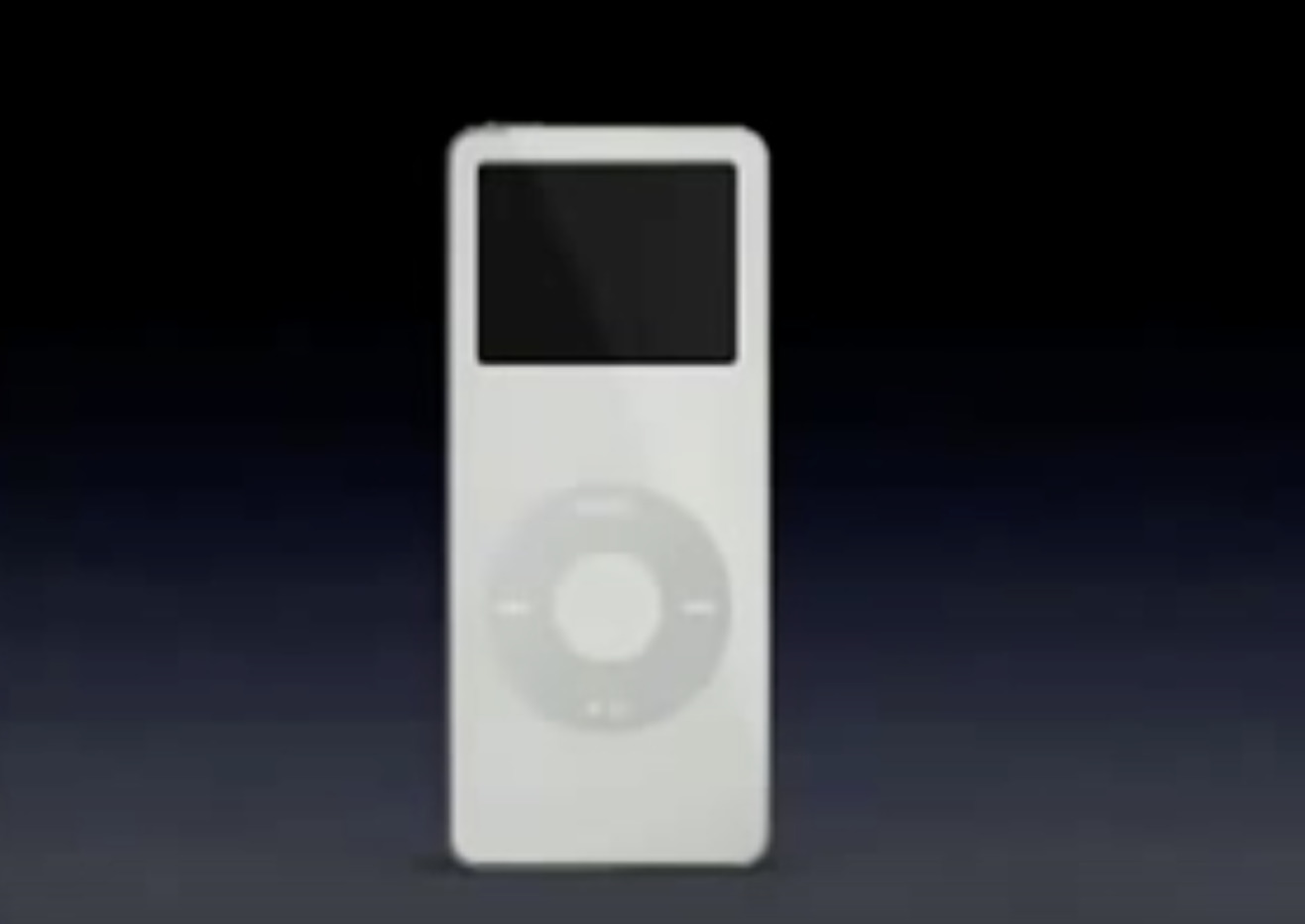
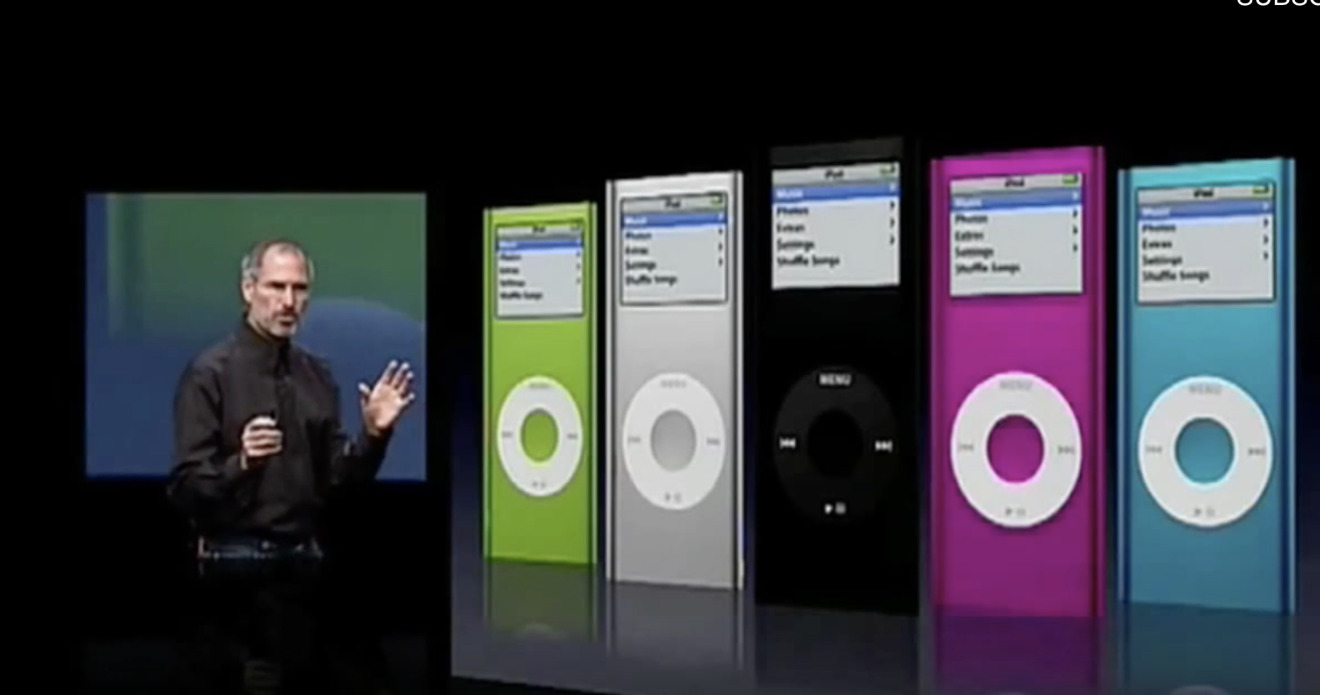
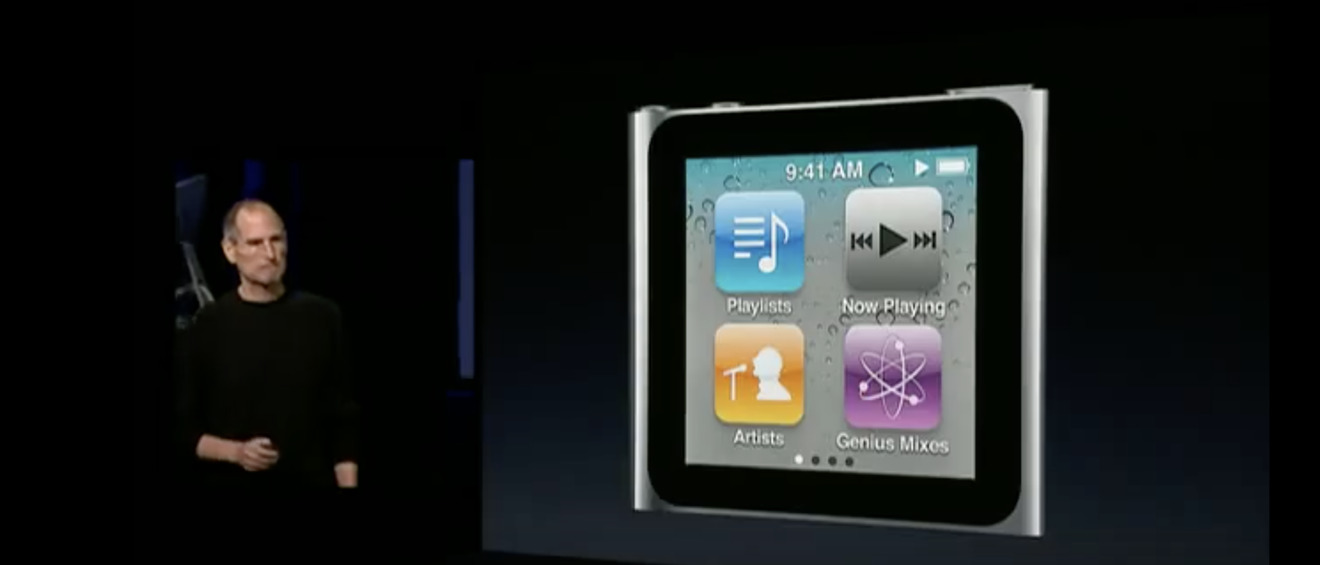
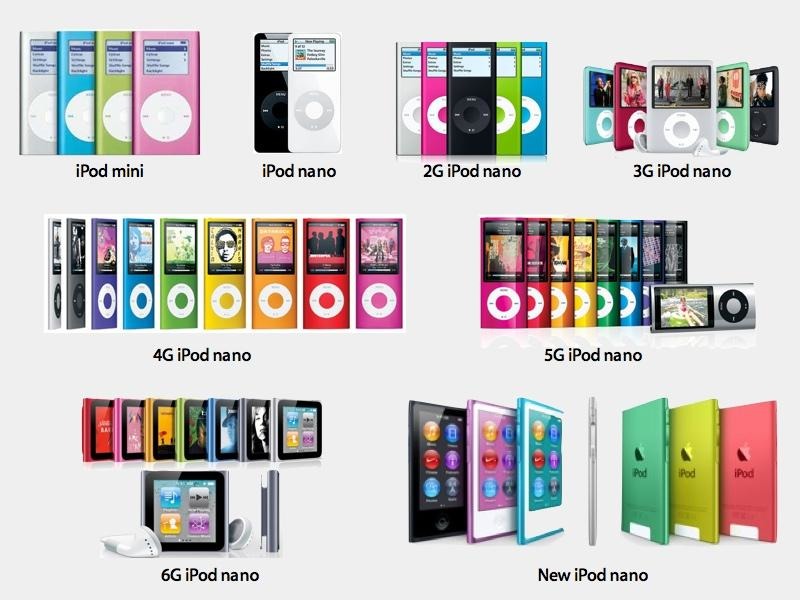




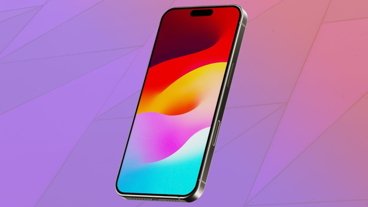


-m.jpg)






 Malcolm Owen
Malcolm Owen
 William Gallagher
William Gallagher
 Mike Wuerthele
Mike Wuerthele


 Christine McKee
Christine McKee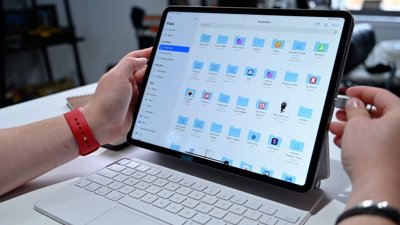
 Andrew Orr
Andrew Orr
 Wesley Hilliard
Wesley Hilliard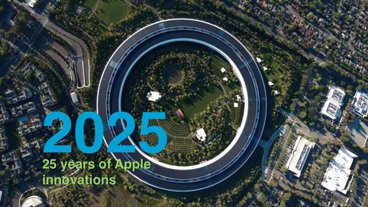
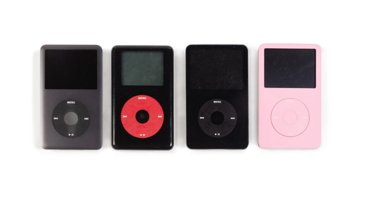
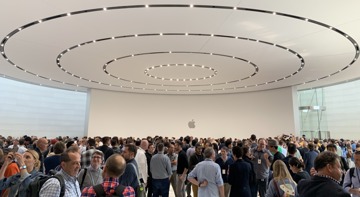






19 Comments
iPod Nano equaled giga-dollars for Apple.
I keep a 6G hidden in my center console at all times. 1000s of songs and their various playlists available via in-car controls. Don't have to worry about cell service or battery drainage as I would if I streamed from my phone. Only have to bring it in once in a while to update the music.
From when Apple was really innovative, rather than iterative.
I miss the Nano because it embodied Apple Design in its most playful, experimental, and unrestrained form. The wild variations from generation to generation made it even more interesting and appealing. It was fine art, jewelry, and a fun toy. Now that Apple is all grown up they apparently have much less need for such frivolity. Apple designers, engineers, and product managers ... back to your salt mines, the cash hoard is getting low.
3G and 4G still running nicely. Good FM radio in places that there is no Internet too.